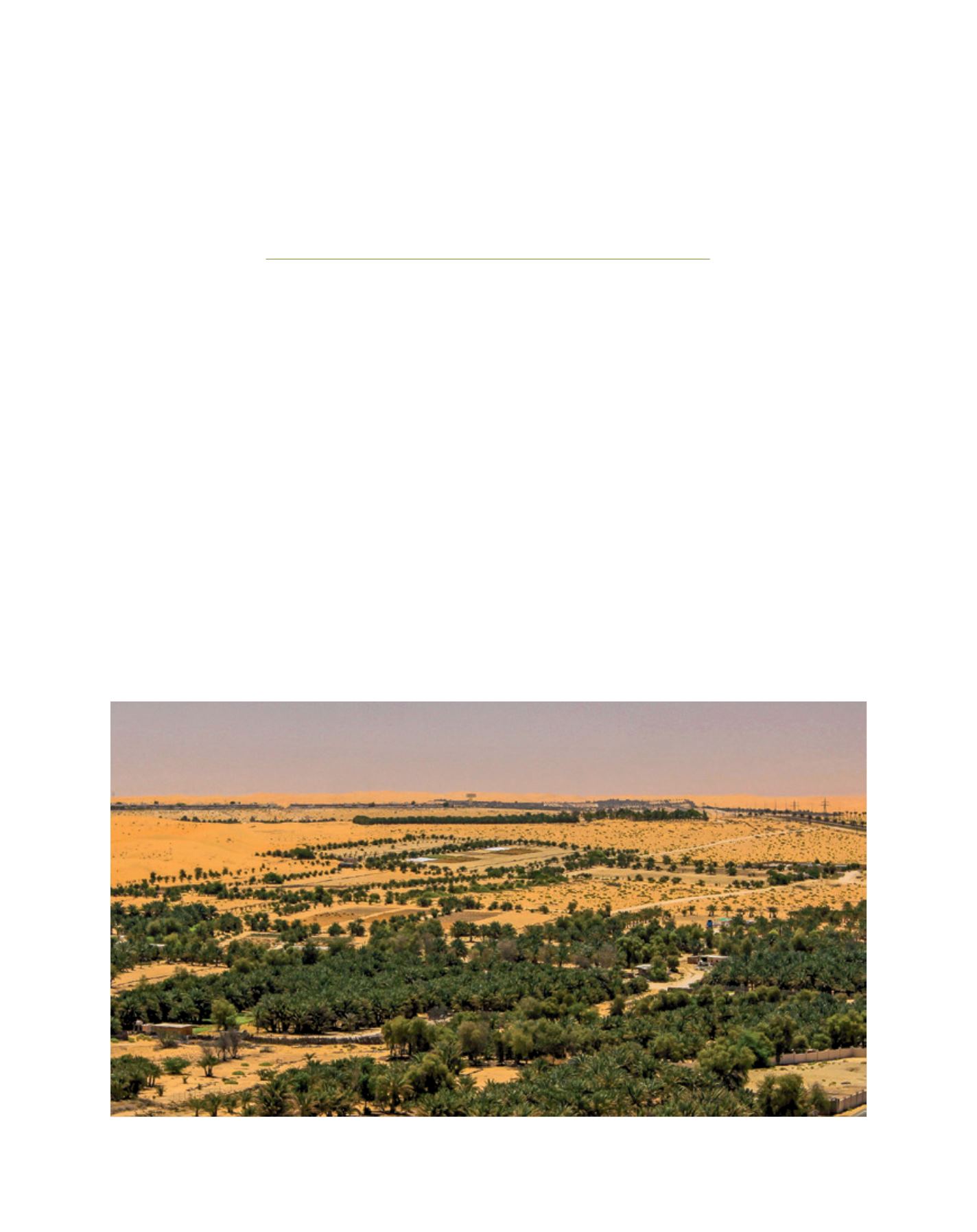

[
] 171
Innovative agricultural intensification
of sandy desert soils using organic
and inorganic amendments
Shabbir A. Shahid, Abdullah Alshankiti, Shagufta Gill and Henda Mahmoudi,
International Center for Biosaline Agriculture, Dubai, United Arab Emirates
E
arth’s total land mass is about 148,939,063 km
2
which is about 29.2 per cent of its total surface.
Water covers approximately 70.8 per cent of the
arth’s surface, mostly in the form of oceans and ice
formations. Earth is the only planet known to have an
atmosphere containing free oxygen, oceans of water on its
surface, and life. Thus, if it provides sustainable ecosys-
tem services we can call it a living land. If, however, its
capacity is diminishing due to diversified threats then
we have to think of its sustainable management for long-
term services for human beings, maintaining biodiversity
and environmental services.
‘Land’ is a broad term, which includes diversified features,
mountains, rivers, forests, agricultural farms, buildings and
so on. However, ‘soil’ is narrower in meaning and exclu-
sively means a medium for plant growth. Overexploitation
of soil resources, for quick benefits without appreciating
soil health, has shrunk soil resources to an unprecedented
level and there is growing concern that over years it may not
be able to provide sufficient food to meet human demand.
Therefore it is essential to maintain soil health for long-
term benefits; this is only possible when we manage the soil
through scientific diagnostics and innovative ways includ-
ing diversified organic and inorganic soil amendments.
Trials on soil amendments for forage production at the
International Center for Biosaline Agriculture (ICBA) have
revealed a general increase, and in some cases a doubling,
of fresh biomass over the control treatment where amend-
ments were not added. Results from greenhouse and field
Land degradation is a serious environmental problem, especially in the drylands that occupy one-third of the Earth’s surface
Image: ICBA
L
iving
L
and
















